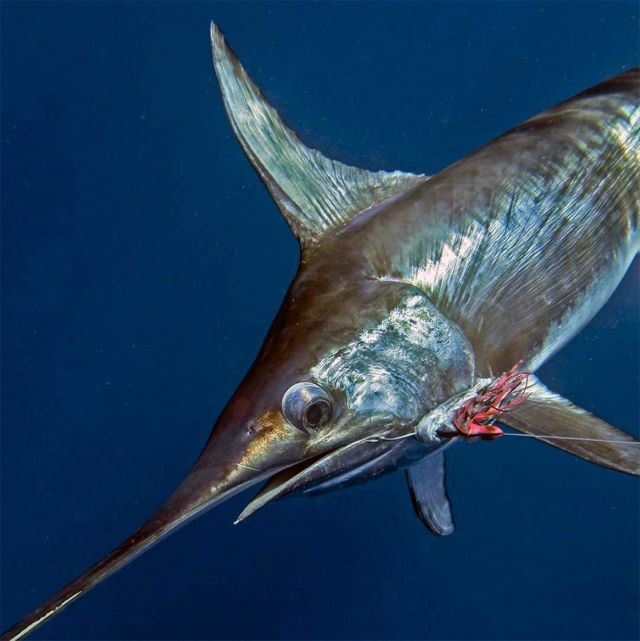
The appearance of Broadbill swordfish (Mekajiki)
Common name: Broadbill swordfish
Japanese name: Mekajiki (眼梶木、眼旗魚、女旗魚、女梶木、女舵木)
Taiwan common name: 劍旗魚、旗魚舅、丁挽舅、劍魚、大目旗魚、丁挽舅旗魚
Chinese common name: 剑鱼
Korean common name: 황새치
French common name: Espadon, Espadron
Spanish common name: Aja para, Albacora, Chichi spada, Emperador, Espada, Espadon, Espardarte
Portuguese common name: Aguilhão, Aguilhão-Meca, Agulha, Agulhao, Agulhão, Agulhão-espadarte, Araguaguá, Catana, Espada, Espadarte, Espadarte-maca, Espadarte-meca, Espadim-azul,Espadão
Scientific name: Xiphias gladius Linnaeus, 1758
Nigiri sushi detail: Broadbill swordfish (Mekajiki) Nigiri sushi
Characteristics:
Broadbill swordfish (Mekajiki) is distributed throughout the world in temperate to tropical waters. It inhabits the surface and mid-oceanic waters of the open ocean. It is the largest of the swordfish species, reaching a total length of 5 meters. The upper crocodile is long and flattened like a sword. The body color is dark brown on the dorsal side and white on the ventral side. The ventral fins and scales are absent.
Among marlin species, the most familiar in Japan are Broadbill swordfish (Mekajiki), Striped marlin (Makajiki), Bayonet fish (Bashokajiki), Blue Marlin (Kurokajiki), Black Marlin (Shirokajiki), and Shortbill spearfish (Furakikajiki).
Mekajiki are caught throughout the year, but those caught mainly by dart fishing in the summer are called “summer meka” and are characterized by their light flavor and mild fat content. Winter meka, caught between October and March, has plenty of fat in its flesh so much so that a knife used to cut it quickly becomes useless.
The flesh is the whitest and softest of all swordfish. Mekajiki’s light flavor makes it suitable for cooking in a variety of ways, but oil is the best way to cook it. It can also be used as sashimi, but teriyaki and steak are the most common cooking methods.
When made into nigiri sushi, the rich, sweet flavor of the fat blends perfectly with the acidity of the vinegared rice. The texture, where the fat melts in your mouth at body temperature, is also delightful. It is a staple at sushi restaurants around Kesennuma, but in Tokyo, it is only occasionally seen at conveyor-belt sushi restaurants. However, in Edomae sushi, swordfish refers to striped marlin (Makajiki).
Share this article